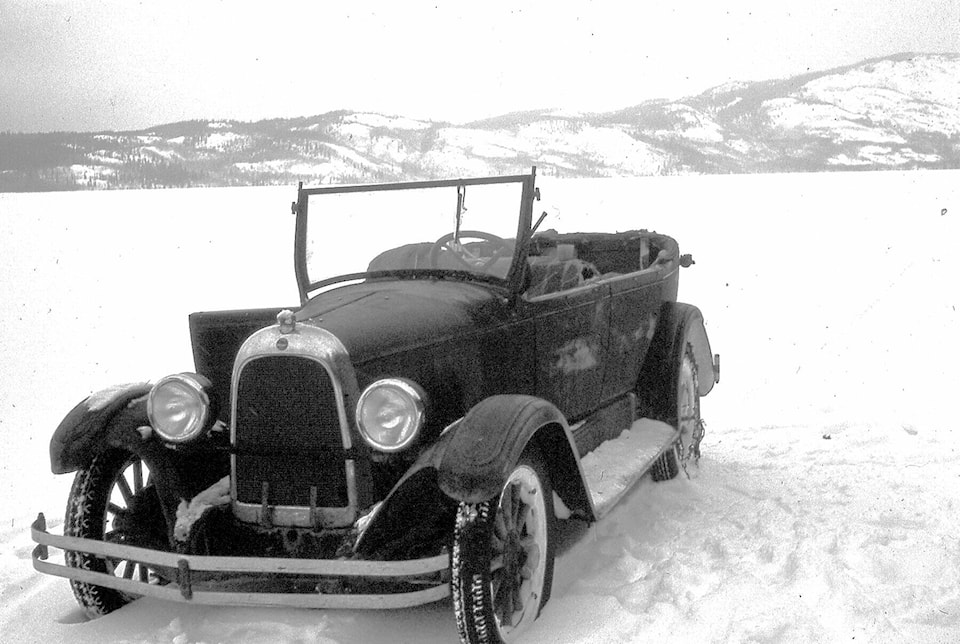In 1926, Willys-Overland Inc. introduced the Whippet automobile, a light, compact sedan. With an affordable starting price of around $500 US for the base 4-cylinder model (about $7,500 today), the Whippet quickly became “a car for the people.”
To get a better idea of how motorists used the Whippet, we contacted Southside resident Bob Murray, whose father Dave owned one of the cars. In an interview with Bob, we gained some insight into the real-world uses for one of the most popular vehicles of the late 1920s.
According to Bob, his father likely didn’t deliberately set out to buy a Whippet, but purchased the vehicle out of necessity. The Whippet was less expensive than many Fords or Chevrolets, which in part accounted for its tremendous (albeit short-lived) popularity. Burns Lake also had a Whippet dealership in 1928; local residents could purchase the car from Frank Carroll’s garage in Decker Lake for the princely sum of $695.
The Murrays’ Whippet, according to Bob, was a multi-purpose vehicle. In addition to transporting Dave to and from jobs in the bush (he worked for many years in the forest industry), it served as a general mode of transportation for the family.
Dave also ran an informal taxi service. When ferry service on Francois Lake shut down for the winter, he used the Whippet to take people across the ice. According to his son, on one such trip, a passenger expressed concern about the thickness of the ‘running surface.’ Dave, in an effort to set the person’s mind at ease, took a swing at the ice with an axe he kept in the car. The implement went straight through, and the understandably concerned passengers were quickly taken back to shore.
The car proved to be a good investment. Bob can’t recall his father having to order replacement parts for it.
“Dad had no issues with it going down to the camp that he had on Uncha Mountain, and running people across the lake,” says Bob. If the vehicle ever needed repairs, the elder Murray must have been able to make do with what he had available.
‘Making do’ with what was available perhaps epitomizes the Whippet automobile. The vehicle served as a ‘good enough’ mode of transportation in the 1920s and ‘30s, when people of modest means often had to make compromises. Dave’s little sedan certainly couldn’t replace the Francois Lake ferry, but it did the job when the lake was frozen. Similarly, a truck would perhaps have been more useful on the Murray farm, but the Whippet was available and it was adequate.
The Whippet remained in the Murray family for decades. Despite its age, it remained a functional vehicle; in the early 1970s, the car earned Dave a fourth place trophy in an antique car parade.
Despite being reliable and versatile, the Whippet automobile didn’t enjoy a long production run. It was discontinued in 1931, a mere five years after its debut. The car’s declining popularity has been blamed on several factors, including the fact that its price point left little room for profit. The Great Depression didn’t help sales, either; by that time, Willys had introduced more powerful (and expensive) six- and eight-cylinder models, and few people had money for new cars.
Despite its short-lived success, the Willys Whippet left an important mark on the automotive landscape. Its dependable four-cylinder motor also served as the basis for the “Go Devil” engine that powered another Willys classic, the Jeep.
© Lakes District Museum Society
